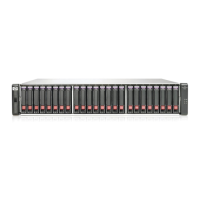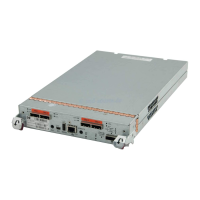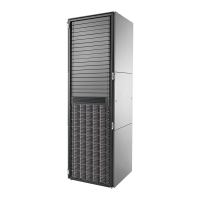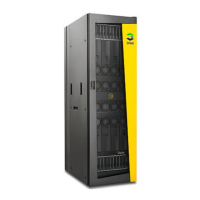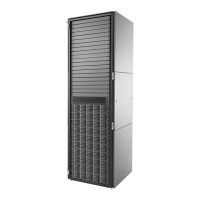522 Glossary
masking Volume-mapping settings that specify no access to that volume by hosts. See also default
mapping and explicit mapping.
master volume A volume that is enabled for snapshots and has an associated snap pool.
MC Management Controller. The processor (located in a controller module) that is responsible
for human-computer interface and computer-computer interface functions, and interacts with
the SC.
metadata Data in the first sectors of a disk drive that stores all disk, vdisk, and volume specific
information including vdisk membership or spare identification, vdisk ownership, volumes
and snapshots in the vdisk, host mapping of volumes, and results of the last media scrub.
network port The Ethernet port on a controller module through which its Management Controller is
connected to the network.
point-to-point Fibre Channel Point-to-Point topology.
primary volume The volume that is the source of data in a replication set and that can be mapped to hosts.
For disaster recovery purposes, if the primary volume goes offline, a secondary volume can
be designated as the primary volume. The primary volume exists in a primary vdisk in the
primary (or local) storage system.
proxy volume A virtual volume in the local system that represents a volume in a remote system. Proxy
volumes are used internally by the controllers to perform actions such as transferring
replication data.
remote replication Asynchronous (batch) replication of block-level data from a volume in a primary system to a
volume in one or more secondary systems by creating a replication snapshot of the primary
volume and copying the snapshot data to the secondary systems via Fibre Channel or iSCSI
links. The capability to perform remote replication is a licensed feature (Remote Snap).
replication image A conceptual term for replication snapshots that have the same image ID in primary and
secondary systems. These synchronized snapshots contain identical data and can be used
for disaster recovery.
replication set Associated primary and secondary volumes that are enabled for replication and that
typically reside in two physically or geographically separate storage systems. See primary
volume and secondary volume.
replication snapshot A special type of snapshot, created by the remote replication feature, that preserves the
state of data of a replication set's primary volume as it existed when the snapshot was
created. For a primary volume, the replication process creates a replication snapshot on
both the primary system and, when the replication of primary-volume data to the secondary
volume is complete, on the secondary system. Replication snapshots are unmappable and
are not counted toward a license limit, although they are counted toward the system's
maximum number of volumes. A replication snapshot can be exported to a regular,
licensed snapshot. See also replication sync point.
replication sync point The state of a replication snapshot whose corresponding primary or secondary snapshot
exists and contains identical data. For a replication set, four types of sync point are
identified: the only replication snapshot that is copy-complete on any secondary system is
the “only sync point”; the latest replication snapshot that is copy-complete on any
secondary system is the “current sync point”; the latest replication snapshot that is
copy-complete on all secondary systems is the “common sync point”; a common sync point
that has been superseded by a new common sync point is an “old common sync point.”
SAS Serial Attached SCSI interface protocol or disk-drive architecture.
SATA Serial ATA disk-drive architecture.
SC Storage Controller. The processor (located in a controller module) that is responsible for
RAID controller functions. The SC is also referred to as the RAID controller.
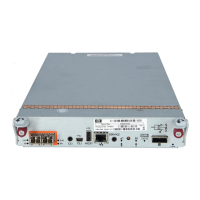
